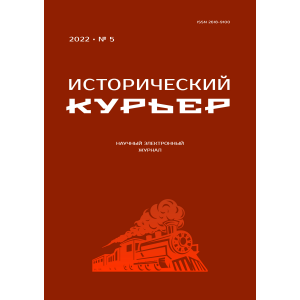“History in Cinema, Cinema in History”: Modern Practices of Film Text Analysis
This issue of the journal mainly includes articles written on the basis of reports presented on April 26–27, 2022 at the International Scientific Conference “History in Cinema, Cinema in History: Modern Practices of Film Text Analysis”, organized by the Institute of History of the SB RAS and the Pobeda Center for Culture and Recreation in Novosibirsk. This scientific forum was attended by ethnographers, historians, sociologists, art historians from St. Petersburg, Moscow, Vologda, Yekaterinburg, Magnitogorsk, Novosibirsk, Barnaul, Irkutsk, as well as scientists from Kazakhstan and Japan. At the plenary session, Academician Valentin Nikolaevich Parmon, Chairman of the Siberian Branch of the Russian Academy of Sciences, addressed the audience with a welcoming speech. During the meeting, various issues related to the study of cinema as a historical source, the history of Russian and foreign cinema, the interpretation of historical realities in feature films and documentaries created in different time periods were discussed. In general, the communication took place in a constructive atmosphere, and the conference became a truly bright, memorable event.
 Welcoming Speech
Welcoming Speech
I am glad to welcome you to the Siberian land! Novosibirsk Akademgorodok is one of the world’s leading centers for the development of science, including in the field of IT technologies. Today, when information, its interpretation and presentation play an increasing role every day, forming public opinion about certain events, your meeting dedicated to cinematography is gaining more importance. Perhaps, to a much greater extent than other types of art, cinema is woven into the fabric of social life, is influenced by it, bears its imprint. The connection between cinema and science has always been very close, and it manifested itself not only in the fact that the creators of the film industry willingly used the latest technologies and technical means created by scientists in their work. At one time, Russian cinema made a great contribution to increasing the prestige of science and shaping its image as the most important social force, largely determining the appearance of the modern world. It is enough to recall the inspiring images of scientists created by Russian cinematographers in such films as “Nine Days of one Year”, “Taming the Fire”, “Choosing a Goal” and many others.
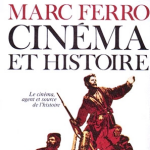 Questions of Theory and History of Cinema
Questions of Theory and History of Cinema
S.O. Egorov
Cinema, History, Ideology: Possible Approaches to the Film Text Interpretation
The article is devoted to the question of possible ways of analyzing ideology in a cinematic work. Possible variants of theoretical and methodological apparatus of research on this topic are proposed, based on approaches of the related humanities disciplines and specific studies available in cinematography studies.
Publishing: 28/10/2022
How to cite: Egorov S.O. Cinema, History, Ideology: Possible Approaches to the Film Text Interpretation // Historical Courier, 2022, No. 5 (25), pp. 11–20. [Available online: http://istkurier.ru/data/2022/ISTKURIER-2022-5-01.pdf]
 Questions of Theory and History of Cinema
Questions of Theory and History of Cinema
L.N. Mazur
Visualization of the Space of a Provincial Town in Soviet Feature Films of the 1930–1980s: Between the Future and the Past
Based on the analysis of feature films of the Soviet era, the article reconstructs the image of a provincial town in its dynamics. In total, three main images are distinguished, replacing each other and reflecting the ideas of the filmmakers about its place in society and prospects - this is, firstly, a provincial city as a changing space, looking to the future (1930s); secondly, the image of a happy present (1950s); thirdly, the province as a keeper of the past, a symbol of a small homeland, tradition, and cultural roots. The last image was transformed in the era of perestroika, filled with negative connotations, giving the provincial city eschatological features.
The topic was supported by the grant of the Russian National Science Foundation No. 21‑18‑00418 “Small Town Museum: The Multiplicity of Memory Cultures (Historical and Sociological Research)”.
Publishing: 28/10/2022
How to cite: Mazur L.N. Visualization of the Space of a Provincial Town in Soviet Feature Films of the 1930–1980s: Between the Future and the Past // Historical Courier, 2022, No. 5 (25), pp. 21–39. [Available online: http://istkurier.ru/data/2022/ISTKURIER-2022-5-02.pdf]
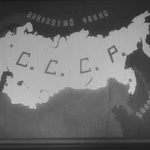 Documentary Films in the USSR
Documentary Films in the USSR
E.V. Golovneva
“Cinema Atlas of the USSR”: Educational and Geographical Film “Western Siberia” (1937)
The article deals with a special segment in the development of Soviet documentary cinema in the 1930s – educational geographical films for Soviet schoolchildren. As an example of this type of cinema the film “Western Siberia” (1937) filmed at the “Sibtechfilm” studio, directed by Z.M. Kalik is considered. The history of creation of this film is analyzed in the context of parallel processes that took place in the 1930s in Soviet cultural policy, cinema and the media.
The research was carried out at the expense of the grant of the Russian Science Foundation (RNF) No. 21-18-00518 “Cinema Atlas of the USSR: The Experience of Positioning a Multinational state” (https://rscf.ru/project/21-18-00518/).
Publishing: 28/10/2022
How to cite: Golovneva E.V. “Cinema Atlas of the USSR”: Educational and Geographical Film “Western Siberia” (1937) // Historical Courier, 2022, No. 5 (25), pp. 40–49. [Available online: http://istkurier.ru/data/2022/ISTKURIER-2022-5-03.pdf]
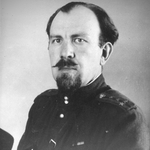 Documentary Films in the USSR
Documentary Films in the USSR
I.A. Golovnev
Golovnev I.A. “Cinema-Atlas of the USSR”: “Turukhansk Region” by Viktor Sytin
The article focuses on a significant episode in the history of visual anthropology – the works of V.A. Sytin, head of the film section of the Society for the Study of the Urals, Siberia and the Far East, associated with the development of ethno-geographic cinema in the USSR in 1920–1930s. The sources for the study are archival documents, periodical articles, scenario sketches, reflecting participation of V.A. Sytin in the development of a major state project “Cinema-Atlas of the USSR” in general, and in the creation of its series on the Turukhansk region, in particular.
The research was carried out at the expense of the grant of the Russian Science Foundation (RNF) No. 21-18-00518 “Cinema Atlas of the USSR: The Experience of Positioning a Multinational state” (https://rscf.ru/project/21-18-00518/).
Publishing: 28/10/2022
How to cite: Golovnev I.A. “Cinema-Atlas of the USSR”: “Turukhansk Region” by Viktor Sytin // Historical Courier, 2022, No. 5 (25), pp. 50–63. [Available online: http://istkurier.ru/data/2022/ISTKURIER-2022-5-04.pdf]
 Documentary Films in the USSR
Documentary Films in the USSR
M.K. Churkin
“…There is a Chronicle for Us before the Screening”: Representations of the Soviet Project of Internal Colonization in the Film Magazine “Siberia on Screen”
The article identifies forms, means and content of representations of the Soviet project of internal colonization in the chronicle-documentary cinema of the USSR of the 1950–1980s. One of such “platforms” for the broadcast of colonial knowledge, ideas and practices was the newsreel “Siberia on the Screen”, which performed not only standard propaganda functions, but also fixed the algorithms of coexistence of the main actors of internal colonization – “A man of power and culture” and “Colonial subalterns”, within whose boundaries the tasks of domination and subordination in relation to territories and people were implemented.
Publishing: 28/10/2022
How to cite: Churkin M.K. “…There is a Chronicle for Us before the Screening”: Representations of the Soviet Project of Internal Colonization in the Film Magazine “Siberia on Screen” // Historical Courier, 2022, No. 5 (25), pp. 64–71. [Available online: http://istkurier.ru/data/2022/ISTKURIER-2022-5-05.pdf]
 Documentary Films in the USSR
Documentary Films in the USSR
V.O. Vasilyeva, E.Yu. Trushkina
Ethnographic Film in the Late USSR: Articulation of Issue
The article examines the specifics of the ethnographic film in the late USSR (1960–1980s). The question is raised about the characteristics and boundaries of this phenomenon, different ways of understanding it by contemporaries. An overview of the existing practices of its production and use at that time is given. The conclusion is made about the possibility of considering this phenomenon in the context of academic process, as a result of multiple communicative interactions between institutions and individuals and as a product and an important feature of the Late Soviet intellectual culture proper.
The article was prepared based on the results of the project “Matter, Image, Body: Visual Environments of Modern Culture” with the support of the Foundation for Humanitarian Studies of the Higher School of Economics in 2020.
Publishing: 28/10/2022
How to cite: Vasilieva V.O., Trushkina E.Yu. Ethnographic Film in the Late USSR: Articulation of Issue // Historical Courier, 2022, No. 5 (25), pp. 72–91. [Available online: http://istkurier.ru/data/2022/ISTKURIER-2022-5-06.pdf]
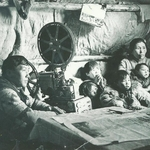 The Peoples of the USSR in the Reflection of Artistic Cinema
The Peoples of the USSR in the Reflection of Artistic Cinema
D.A. Amanzholova
“All the Questions are Linked with Our Ideal of a Soviet Man”: Cinema for the People of the USSR (1920–1930s)
The article examines the features of the development of cinema as a component of national policy in the early Soviet period. Specific examples of organization of film screenings, the activities of Sovkino and the first experience of the development of film production in national republics in the 1920s–1930s are analyzed. The main attention is paid to the methods, specifics and effectiveness of using cinema as a means of propaganda, education and formation of the Soviet system of values, the development of national cultures in their transition from tradition to modernity in its Bolshevik interpretation, participation of national intelligentsia in creating a new artistic reality and introducing it into the mass consciousness.
The article was prepared within the framework of the project of the Ministry of Science and Higher Education of the Republic of Kazakhstan No. AP08857194 (“Visual Anthropology and the History of Images of Kazakhstan Culture in 19th–21th Centuries: Evolution and Gaining of Agency”).
Publishing: 28/10/2022
How to cite: Amanzholova D.A. “All the Questions are Linked with Our Ideal of a Soviet Man”: Cinema for the People of the USSR (1920–1930s) // Historical Courier, 2022, No. 5 (25), pp. 92–102. [Available online: http://istkurier.ru/data/2022/ISTKURIER-2022-5-07.pdf]
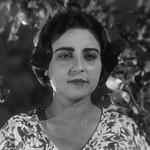 The Peoples of the USSR in the Reflection of Artistic Cinema
The Peoples of the USSR in the Reflection of Artistic Cinema
N.V. Kazurova
The Сlash of Soviet Propaganda and the Traditional Way of Life in Azerbaijani Cinema of the late 1920s – mid-1930s (Case of I. Orujova’s Roles in “Sevil” and “Almaz”)
The article examines the influence of Soviet propaganda on the cinematography of Azerbaijan in the late 1920s – mid-1930s. By the example of films based on the plays of J. Jabbarli, “Sevil” (1929) by A. Bek-Nazarov and “Almas” (1936) by A.-R. Kuliyev and G. Braginsky. The transformation of the female image is investigated. It is shown that two mythosemantic factors are combined in the appearance of female characters: a heroine struggling with prejudice and a young and attractive mother woman. It is revealed that Azerbaijani films fit into the canon of Stalinist socialist realism and at the same time are closely related to the local national specifics of the region, which contributed to their more effective impact on the audience.
The research was carried out at the expense of the grant of the Russian Science Foundation (RNF) No. 21-18-00518 “Cinema Atlas of the USSR: The Experience of Positioning a Multinational stat” (https://rscf.ru/project/21-18-00518/).
Publishing: 28/10/2022
How to cite: Kazurova N.V. The Сlash of Soviet Propaganda and the Traditional Way of Life in Azerbaijani Cinema of the late 1920s – mid-1930s (Case of I. Orujova’s Roles in “Sevil” and “Almaz”) // Historical Courier, 2022, No. 5 (25), pp. 103–115. [Available online: http://istkurier.ru/data/2022/ISTKURIER-2022-5-08.pdf]
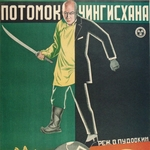 The Peoples of the USSR in the Reflection of Artistic Cinema
The Peoples of the USSR in the Reflection of Artistic Cinema
V.A. Belyaeva-Sachuk, E.Yu. Trushkina
Buryat Buddhism in the Soviet Ethnographic Cinema of the 1920–1930s
The article examines the history of Soviet ethnographic cinema of the 1920s–1930s. The issue of documentary film production at the largest film studios of the country is being investigated, including the implementation of a project to create a series of ethnographic films “Kinoatlass of the USSR”. The visualization of ethnicity (Buryat Buddhism) is shown using the example of V.I. Pudovkin’s film “Descendant of Genghis Khan” (1928). It is revealed that early Soviet films are a valuable documentary source for visual anthropological research: the study of traditional culture, as well as the film representation of the ethnicity of the peoples of the USSR.
The research was carried out at the expense of the grant of the Russian Science Foundation (RNF) No. 21-18-00518 “Cinema Atlas of the USSR: The Experience of Positioning a Multinational state” (https://rscf.ru/project/21-18-00518/).
Publishing: 28/10/2022
How to cite: Belyaeva-Sachuk V.A., Trushkina E.Yu. Buryat Buddhism in the Soviet Ethnographic Cinema of the 1920–1930s // Historical Courier, 2022, No. 5 (25), pp. 116–129. [Available online: http://istkurier.ru/data/2022/ISTKURIER-2022-5-09.pdf]
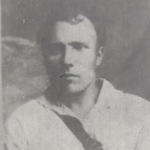 The Peoples of the USSR in the Reflection of Artistic Cinema
The Peoples of the USSR in the Reflection of Artistic Cinema
Yu.V. Kuzmin
“Descendant of Genghis Khan”: Book, Script, Movie
The article continues the author’s series of publications devoted to the history of creation and fate of the film “Descendant of Genghis Khan”, based on the book of the same name by the Siberian writer I.M. Novokshonov. The film was directed by the famous director V. Pudovkin, and the main role was played by the world-famous actor V. Inkizhinov. The creative community of these unique personalities is emphasized, thanks to which the film has become a real masterpiece not only of domestic, but also of the world cinema as a whole. The historical and ethnographic scenes of the Buddhist Tsam, participation in the filming of former Siberian partisans and Trans-Baikal semeyskys, who preserved unique sketches of traditional Siberian society for science, gave special value to the film. The emigration of the lead actor of the film to France, the repression against the writer made the film banned for a long time for the audience.
RFBR Grant 20-59-44008 Mong_a “World and Russian Mongolian Studies: National Schools, Concepts, Personalities”.
Publishing: 28/10/2022
How to cite: Kuzmin Yu.V. “Descendant of Genghis Khan”: Book, Script, Movie // Historical Courier, 2022, No. 5 (25), pp. 130–137. [Available online: http://istkurier.ru/data/2022/ISTKURIER-2022-5-10.pdf]
 The Peoples of the USSR in the Reflection of Artistic Cinema
The Peoples of the USSR in the Reflection of Artistic Cinema
T.T. Dalaeva
Cultural Practices of Amateur art of Soviet Kazakhstan in Documentary Films-Concerts in 1956–1987: From Official Ideologies to National Content
The article is devoted to the study of the practice of presenting the amateur art of Kazakhstan in documentary films during the period of late socialism. Concert films shot by directors and cameramen of the Almaty film studio of feature and chronicle films in 1956–1968 and the Kazakhtelefilm studio in 1963–1987 from the Central State Archive of Film and Photo Documents and Sound Recording of the Republic of Kazakhstan were analyzed. Archival documents from the fonds of the Central State Archive of the Republic of Kazakhstan were used, which present materials on the history of filming, the preparation of scripts, their discussions, the texts of the scripts themselves, documents of the republican house of folk art, etc.
The article was prepared within the framework of the project of the Ministry of Science and Higher Education of the Republic of Kazakhstan No. AP08857194 (“Visual Anthropology and the History of Images of Kazakhstan Culture in 19th–21th Centuries: Evolution and Gaining of Agency”).
Publishing: 28/10/2022
How to cite: Dalayeva T.T. Cultural Practices of Amateur art of Soviet Kazakhstan in Documentary Films-Concerts in 1956–1987: From Official Ideologies to National Content // Historical Courier, 2022, No. 5 (25), pp. 138–145. [Available online: http://istkurier.ru/data/2022/ISTKURIER-2022-5-11.pdf]
 The History of Russia in Art Cinema
The History of Russia in Art Cinema
D.I. Petin, K.A. Tishkina
“The Film Must Be Strictly Historical…”: A Discussion of the Filming of “Kolchakovshchina” in a Siberian Periodical in 1929
The Soviet authorities were already paying attention to perpetuating the memory of the Civil War in the 1920s. A typical example of this was the 1929 production of the film “Kolchakovshchina” in Siberia. The events of the fratricidal confrontation were still too fresh in the public mind, leading to an active absentee discussion in the regional press about what this film should be like. This article is devoted to the scientific understanding of this discussion.
The study was carried out with the support of the RFBR in the framework of scientific project No. 19-39-60009.
Publishing: 28/10/2022
How to cite: Petin D.I., Tishkina K.A. “The Film Must Be Strictly Historical…”: A Discussion of the Filming of “Kolchakovshchina” in a Siberian Periodical in 1929 // Historical Courier, 2022, No. 5 (25), pp. 146–155. [Available online: http://istkurier.ru/data/2022/ISTKURIER-2022-5-12.pdf]
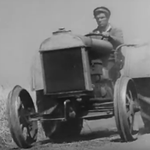 The History of Russia in Art Cinema
The History of Russia in Art Cinema
M.A. Beznin, T.M. Dimoni
The Film “Earth” (1930) as a Reflection of Transformation of Property Relations
The symbolic and visual series of the film “Earth” is analyzed in order to identify changes in the property relations of the early 1930s. The main attention is focused on the reaction of the peasant community about the destruction of personification of land use. A comparison of the elements of land use of traditional peasant society with the first stages of collective farm construction is carried out, in more detail in this regard, the attitude to such an important object-symbol of proprietary positions as the border is highlighted.
The publication was prepared with the support of the Russian Science Foundation, project No. 22-28-00325, https://rscf.ru/project/22-28-00325/.
Publishing: 28/10/2022
How to cite: Beznin M.A., Dimoni T.M. The Film “Earth” (1930) as a Reflection of Transformation of Property Relations // Historical Courier, 2022, No. 5 (25), pp. 156–165. [Available online: http://istkurier.ru/data/2022/ISTKURIER-2022-5-13.pdf]
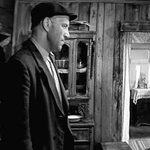 The History of Russia in Art Cinema
The History of Russia in Art Cinema
O.V. Gorbachev
Semantics of the Objective World of Soviet Village Cinema in the “Thaw” Period
The features of representation of material culture in the rural cinema of the Khrushchev decade are characterized. It is shown that the symbol system of the objective world of cinema was determined during this period, both by ideological campaigns and new phenomena in the life of Soviet society: the growing individualization of consciousness, the need for technological progress, the active interaction of the city and the countryside.
Publishing: 28/10/2022
How to cite: Gorbachev O.V. Semantics of the Objective World of Soviet Village Cinema in the “Thaw” Period // Historical Courier, 2022, No. 5 (25), pp. 166–180. [Available online: http://istkurier.ru/data/2022/ISTKURIER-2022-5-14.pdf]
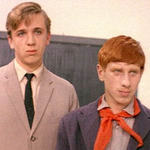 The History of Russia in Art Cinema
The History of Russia in Art Cinema
N.I. Churkina
“Thaw” in the School Culture: Parent Meetings in Soviet Cinema of 1960s
The article presents the results of a study of parent-teacher meetings, represented in the Soviet school cinema of the thaw period (“Large and Small”, “Literature Lesson”, “Hello, our Dads”). Based on a comparative analysis of components of the material and spiritual culture of the school, a conclusion is made about the beginning of liberalization of school culture, the formation of the parent community, which is confirmed by the transformation of external appearance of the teacher and parents; transition in interaction from monologue to dialogue, discussion; changing the position of the student.
Publishing: 28/10/2022
How to cite: Churkina N.I. “Thaw” in the School Culture: Parent Meetings in Soviet Cinema of 1960s // Historical Courier, 2022, No. 5 (25), pp. 181–192. [Available online: http://istkurier.ru/data/2022/ISTKURIER-2022-5-15.pdf]
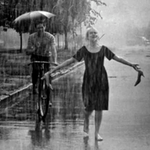 The History of Russia in Art Cinema
The History of Russia in Art Cinema
D.A. Anan’ev
Nostalgia for the “Thaw” Period in the Soviet Cinema of the Second Half of the 1970s – Mid-1980s
The paper identifies ways of the Thaw Period’s nostalgic representation in the Soviet films of 1970s-mid-1980s. It is concluded that the Soviet filmmakers started to analyze the Thaw period through the generational discourse, even before the Thaw ended. At first they demonstrated a critical view of the “Sixtiers” (e.g., in the films of M. Khutsiev and R. Viktorov based on the scripts of A. Grebnev) which in the 1970s gave way to the nostalgic representation of the recent past. It can be seen, first of all, in the films creating an idealized image of the past times (e.g., “The Blue Portrait”; 1976, dir. G. Shumsky; “Photographs on the Wall”, 1978, dir. A. Vasilyev; “Dawns are Kissing”, 1978, dir. S. Nikonenko). Another way of nostalgic representation was to construct a positive image of a protagonist who adhered to the values and had best qualities of the “Sixtiers” generation.
Publishing: 28/10/2022
How to cite: Anan’ev D.A. Nostalgia for the “Thaw” Period in the Soviet Cinema of the Second Half of the 1970s – Mid-1980s // Historical Courier, 2022, No. 5 (25), pp. 193–203. [Available online: http://istkurier.ru/data/2022/ISTKURIER-2022-5-16.pdf]
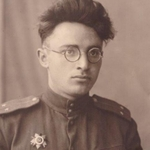 Movie Heroes on the Screen and in Life
Movie Heroes on the Screen and in Life
L.M. Dameshek
At War as at War (Notes of the Son of the Main Character of the Film)
The memoirs of the famous historian Lev Mikhailovich Dameshek about his father, Mikhail Leontievich Dameshek, a participant in the Great Patriotic War, are published. The front-line biography of M.L. Dameshek formed the basis of Viktor Kurochkin’s novel “At War as at War” and the film of the same name, directed by Viktor Tregubovich and released in 1969. Mikhail Leontievich himself became a prototype of the main character of the film, Sergeant Mikhail Domeshek (performed by People’s Artist of the USSR Oleg Borisov). The author of the memoirs tells about the life path and character of his father, about meetings with his comrades in arms. The text is accompanied by photographs and quotations from rare documents stored in the Dameshek family archive.
Publishing: 28/10/2022
How to cite: Dameshek L.M. At War as at War (Notes of the Son of the Main Character of the Film) // Historical Courier, 2022, No. 5 (25), pp. 204–212. [Available online: http://istkurier.ru/data/2022/ISTKURIER-2022-5-17.pdf]
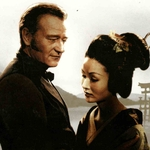 Foreign Cinema
Foreign Cinema
P.E. Podalko
From the Image of the “Enemy” to the Image of the “Friend”: “Japanese Theme” in Post-War American Cinema (2nd Half of 1940s – Early 1960s)
The article aims to acquaint the Russian audience with American feature films of the late 1940s – early 1960s on the topic of mutual rapprochement of the “West” and the “East”, which played a significant role both in the general enlightenment of the masses and in achieving the goals of political propaganda in the conditions of the “Cold War”. The following films are analyzed: “Tokyo Joe” (1949), “Tokyo File 212” (1951), “Go for Broke!” (1951), “Japanese War Bride” (1952), “Sayonara” (1956), “The Barbarian and The Geisha” (1958), “The Teahouse of the August Moon»” (1956), “None but The Brave” (1965).
Publishing: 28/10/2022
How to cite: Podalko P.E. From the Image of the “Enemy” to the Image of the “Friend”: “Japanese Theme” in Post-War American Cinema (2nd Half of 1940s – Early 1960s) // Historical Courier, 2022, No. 5 (25), pp. 213–221. [Available online: http://istkurier.ru/data/2022/ISTKURIER-2022-5-18.pdf]
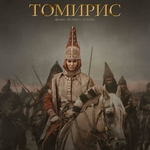 Foreign Cinema
Foreign Cinema
N.N. Golovchenko
“Tomiris”: Searching for Identity
The article is devoted to the analysis of the film “Tomiris” by Akan Satayev produced in 2019. There is a historical narrative within the scope of a costume drama and modern cliches about the ancient world and problems unusual to the Early Iron Age in the film. The author comes to conclusion that the clothes complex from all the Scythian world of different periods and regions is on the screen not by chance. The reconstructions and replicas are the results of the work of serious specialists and a reasonably chosen, but deliberately changed conceptual framework.
Publishing: 28/10/2022
How to cite: Golovchenko N.N. “Tomiris”: Searching for Identity // Historical Courier, 2022, No. 5 (25), pp. 222–230. [Available online: http://istkurier.ru/data/2022/ISTKURIER-2022-5-19.pdf]
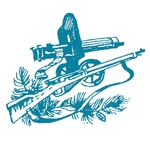 Scientific Life
Scientific Life
V.V. Zhuravlev
Coming Out of the Civil War as a Scientific Problem: International Conference at the Institute of History SB RAS
On September 5–7, 2022 the Institute of History of the Siberian Branch of the Russian Academy of Sciences hosted an international scientific conference “The Civil War in Russia: Exit Problems, Historical Consequences, Lessons for Modernity”, which discussed a wide range of problems in the history of the most severe internal conflict of a century ago. The aim of the conference was a comprehensive scientific understanding of the Civil War in Russia as a complex, large-scale and time-consuming historical event that had a strong and still inexhaustible impact on the fate of Russia and the world. The conference included the work of eight thematic panels and a problem round table, the presentation of the latest scientific literature. A collection of scientific papers of the conference participants was published in advance.
Publishing: 28/10/2022
How to cite: Zhuravlev V.V. Coming Out of the Civil War as a Scientific Problem: International Conference at the Institute of History SB RAS // Historical Courier, 2022, No. 5 (25), pp. 231–233. [Available online: http://istkurier.ru/data/2022/ISTKURIER-2022-5-20.pdf]
 Scientific Life
Scientific Life
D.O. Nikulin
All-Russian Youth Scientific School-Conference with International Participation “Actual Problems of Historical Research: The View of Young Scientists”
The material presents an overview of the work of the All‑Russian Youth Scientific School-conference with international participation “Actual Problems of Historical Research: The View of Young Scientists”, held in Novosibirsk from September 8 to 11, 2022: the composition of participants, the topics of the scientific school, sections and round tables.
Publishing: 28/10/2022
How to cite: Nikulin D.O. All-Russian Youth Scientific School-Conference with International Participation “Actual Problems of Historical Research: The View of Young Scientists” // Historical Courier, 2022, No. 5 (25), pp. 234–236. [Available online: http://istkurier.ru/data/2022/ISTKURIER-2022-5-21.pdf]
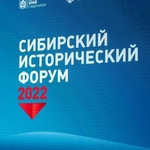 Scientific Life
Scientific Life
E.V. Komleva
IX International Siberian Historical Forum “Peoples of Siberia and the Far East from Antiquity to the Present Day”
The article presents a brief overview of the IX International Siberian Historical Forum held on September 14–16, 2022 in Krasnoyarsk. The author lists areas in which various issues related to the analysis of the historical path of development of Asian Russia, the representation of the heritage of our ancestors in the modern world and the preservation of historical memory were discussed. The participation of the researchers from the Institute of History of the Siberian Branch of the Russian Academy of Sciences in the event is emphasized.
Publishing: 28/10/2022
How to cite: Komleva E.V. IX International Siberian Historical Forum “Peoples of Siberia and the Far East from Antiquity to the Present Day” // Historical Courier, 2022, No. 5 (25), pp. 237–239. [Available online: http://istkurier.ru/data/2022/ISTKURIER-2022-5-22.pdf]
 Scientific Life
Scientific Life
A.I. Razdorskiy
The Fifth International Scientific Conference “Trade, Merchants and Customs in Russia in the 16th–20th Centuries”
The message is dedicated to the Fifth International Scientific Conference “Trade, Merchants and Customs in Russia in the 16th–20th Centuries”, held on September 27–29, 2022 in Novosibirsk on the basis of the Institute of History of the Siberian Branch of the Russian Academy of Sciences. It is told about the composition of the participants of the conference, the directions of the forum. In particular, in addition to the plenary session, the reports were presented at eight sections devoted to the history of foreign and domestic trade, merchants and customs in Russia in the 17th–20th centuries, merchant biographies. This year, for the first time, the chronological framework of the conference was expanded to the end of the 20th century, which allowed the formation of a special section on trade of the Soviet era.
Publishing: 28/10/2022
How to cite: Razdorskiy A.I. The Fifth International Scientific Conference “Trade, Merchants and Customs in Russia in the 16th–20th Centuries” // Historical Courier, 2022, No. 5 (25), pp. 240–243. [Available online: http://istkurier.ru/data/2022/ISTKURIER-2022-5-23.pdf]
 Scientific Life
Scientific Life
T.V. Panich
All-Russian Scientific Seminar “Pokrovsky Readings – 2022”
The review presents the work of the All-Russian scientific seminar on Archeography and Source Studies “Pokrovsky Readings”, held on October 13, 2022 at the Institute of History SB RAS and dedicated to the memory of Academician N.N. Pokrovsky. The participants of the seminar, its thematic directions are reported, the content of the reports is given in a brief form.
Publishing: 28/10/2022
How to cite: Panich T.V. All-Russian Scientific Seminar “Pokrovsky Readings – 2022” // Historical Courier, 2022, No. 5 (25), pp. 244–247. [Available online: http://istkurier.ru/data/2022/ISTKURIER-2022-5-24.pdf]



